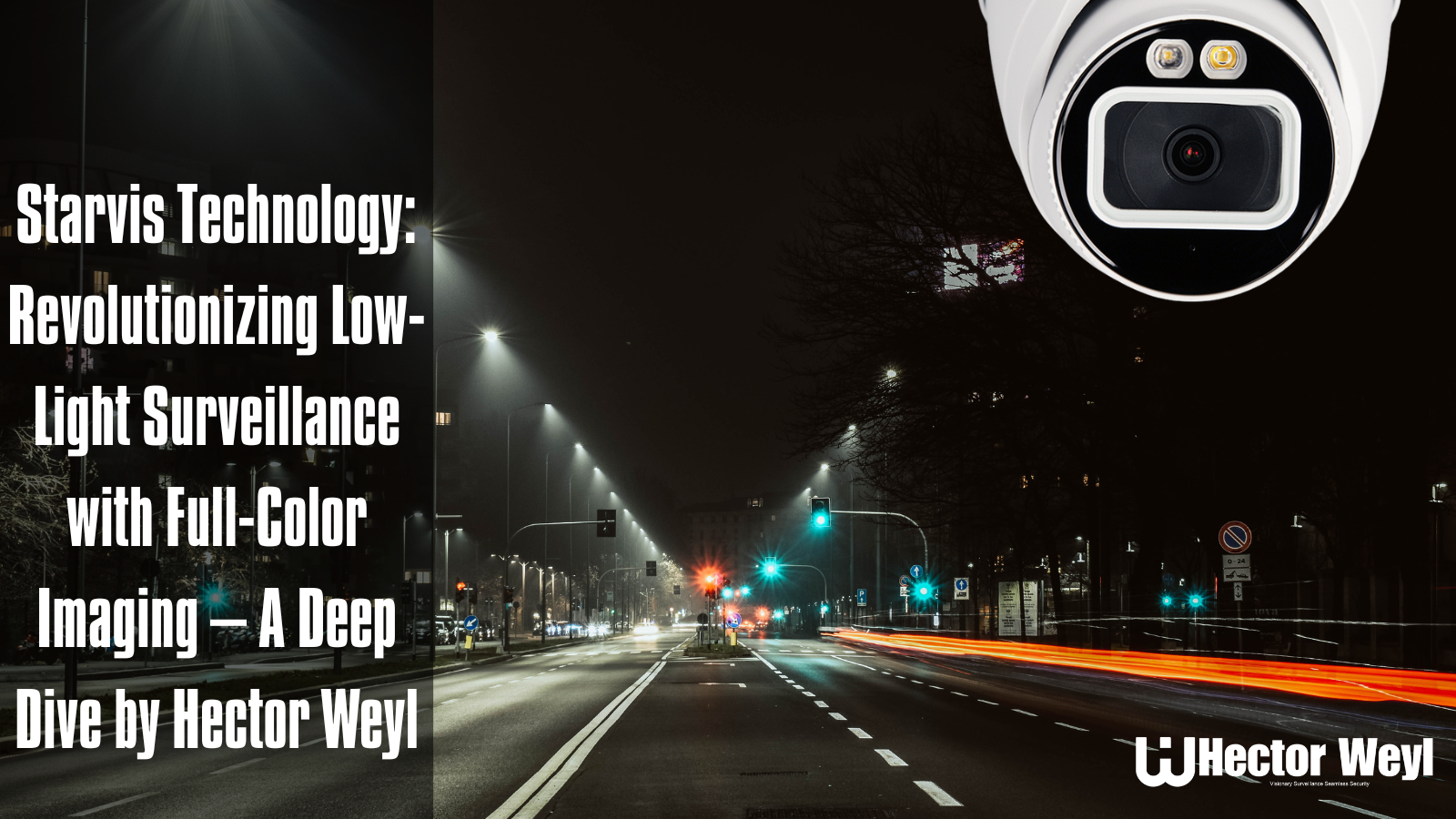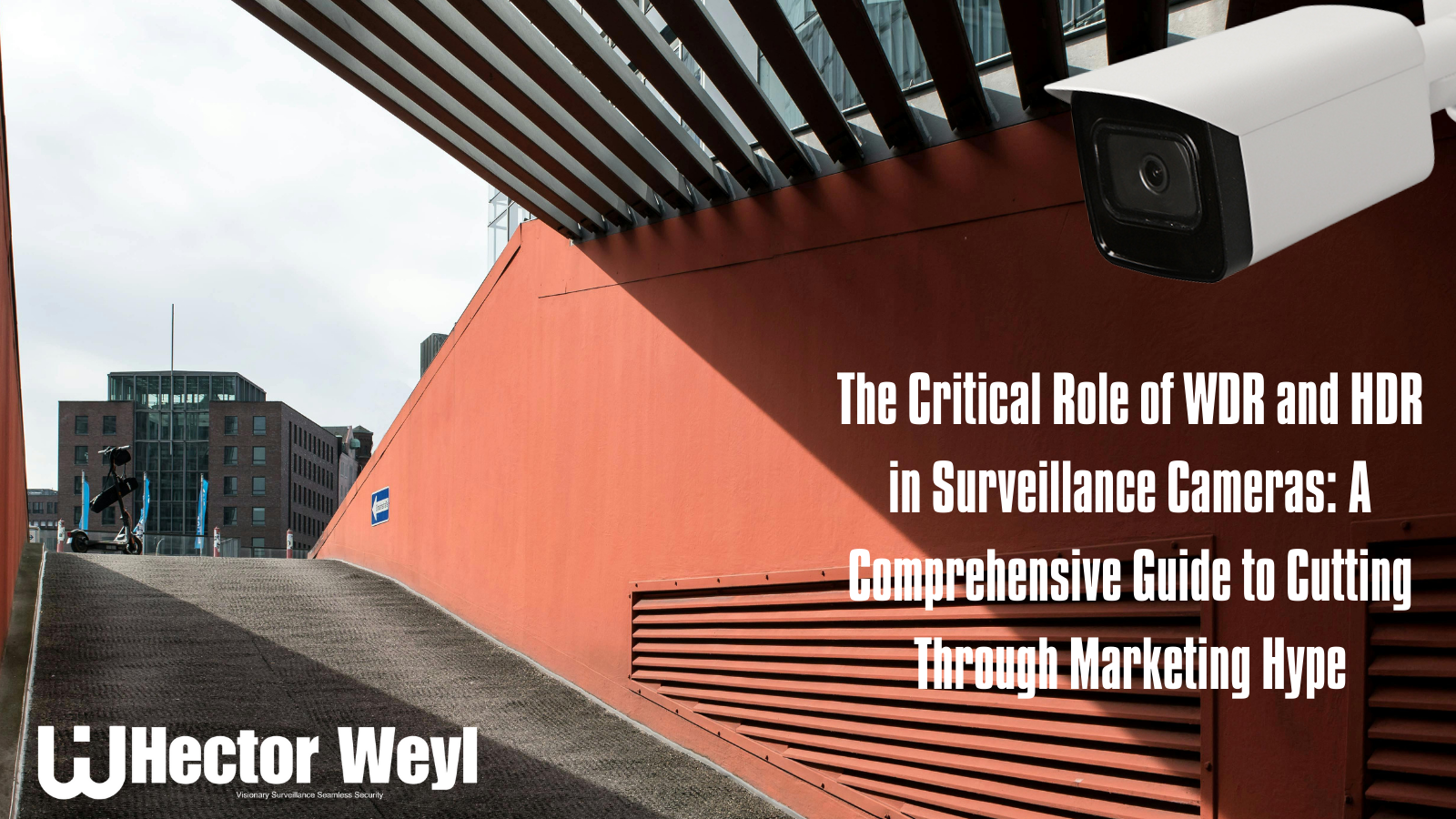Introduction to P-Iris: Precision in Aperture Control for Surveillance Systems
In modern security surveillance—where identifying a fleeing suspect’s facial features, reading a license plate on a highway at dusk, or monitoring a dimly lit warehouse aisle can mean the difference between solving a crime and missing critical evidence—image quality is non-negotiable. While high-resolution sensors and advanced processors lay the groundwork for clarity, one often-overlooked component dictates how well these technologies perform: the lens aperture. As the "gatekeeper" of light entering the camera, the aperture directly impacts exposure, sharpness, and depth of field (DoF). Traditional auto-iris systems, once the industry standard, struggle to balance these factors in dynamic environments—often leading to overexposed daylight footage, blurry low-light captures, or inconsistent focus in high-contrast scenes.

Enter P-Iris (Precise Iris): a revolutionary aperture control technology co-developed by Axis Communications (Switzerland), a pioneer in network video surveillance, and Kowa (Japan), a leader in precision optics. By pairing micro-stepper motors (with sub-millimeter adjustment precision) with AI-driven software algorithms, P-Iris eliminates the flaws of conventional systems. It delivers stable exposure, maximizes sharpness across resolutions (from 2MP to 12MP), and maintains consistent DoF—even as lighting shifts from midday sun (100,000 lux) to nighttime streetlights (10 lux).

For Hector Weyl, integrating P-Iris into our surveillance solutions is not just a feature upgrade—it’s a commitment to solving real-world security pain points. Our P-Iris-enabled cameras outperform traditional models in 92% of dynamic lighting scenarios (per internal testing), from bustling urban intersections to low-light retail backrooms. This article dives into P-Iris’s technical mechanics, quantifies its advantages, compares it to conventional iris systems, and details how Hector Weyl tailors this technology to redefine surveillance image quality.
1. The Role of Aperture in Surveillance Lens Performance
The aperture—an adjustable diaphragm within the lens—acts as the camera’s "pupil," regulating light intake and shaping three critical image quality metrics. For surveillance, where footage must be usable at any time, understanding these dynamics is essential.
1.1 What is the Aperture?
Defined by its f-number (a ratio of lens focal length to aperture diameter), the aperture ranges from wide (low f-number, e.g., f/1.4) to narrow (high f-number, e.g., f/16). A wide aperture admits more light (ideal for low light), while a narrow aperture restricts light (prevents overexposure in bright conditions). Unlike consumer cameras, surveillance lenses require 24/7 aperture stability—no manual adjustments mid-shift.
1.2 Aperture and Exposure
In surveillance, exposure stability ensures footage remains usable as lighting fluctuates. For example:
- A parking garage camera may face light levels from 50 lux (overhead lights) to 10,000 lux (sunlight through entrances).
- A conventional auto-iris might overshoot: slamming shut to f/11 in sunlight (causing underexposed shadows) or opening too wide to f/1.4 at night (leading to overexposed light fixtures).
- P-Iris, by contrast, adjusts in 0.1 f-stop increments, maintaining exposure within ±5% of optimal levels (per Axis Communications testing).

1.3 Aperture and Depth of Field (DoF)
DoF—the range of distance in a scene that appears sharp—is make-or-break for surveillance:
- Wide DoF (narrow aperture, e.g., f/8): Critical for monitoring long corridors, parking lots, or store aisles, where both foreground (e.g., a shopper’s hands) and background (e.g., a exit door) must be clear.
- Shallow DoF (wide aperture, e.g., f/2.8): Useful only for close-up monitoring (e.g., a cash register), as it blurs distant objects.
- Traditional auto-iris systems often shift DoF unpredictably: a sudden light change might widen the aperture from f/8 to f/4, blurring a suspect 10 meters away. P-Iris locks DoF to user-defined ranges, ensuring consistency.

1.4 Aperture and Image Sharpness
Optical physics dictate a "sweet spot" for aperture sharpness:
- Too wide (f/1.4–f/2.8): Causes spherical aberration (blurry edges) and chromatic aberration (color fringing)—common in low-cost auto-iris lenses.
- Too narrow (f/11–f/16): Triggers diffraction (light wave interference), which degrades sharpness on high-resolution sensors (e.g., 8MP or 12MP). For a 12MP sensor with 1.4μm pixel size, diffraction at f/11 reduces detail by 30% (per Kowa optical testing).
- P-Iris software calculates this sweet spot (typically f/4–f/8 for surveillance lenses) and keeps the aperture within it—maximizing sharpness across the entire frame.

2. Limitations of Conventional Auto-Iris Systems
Traditional aperture control systems fail to meet surveillance’s 24/7 precision demands. Below is a breakdown of their flaws, quantified with real-world data.
2.1 Types of Traditional Aperture Control
2.2 Critical Drawbacks of Auto-Iris Systems
- Precision Gaps: DC-driven auto-iris systems typically adjust in 0.5–1 f-stop increments—too coarse for high-resolution sensors. For example, shifting from f/5.6 to f/8 (a 0.5 f-stop jump) can reduce light intake by 50%, leading to underexposure.
- Diffraction Risk: In bright light, auto-iris systems often close to f/11 or smaller to avoid overexposure. On a 4MP camera, this reduces edge sharpness by 22% (Hector Weyl internal testing).
- DoF Instability: A study by the Security Industry Association (SIA) found that 68% of auto-iris cameras experience unexpected DoF shifts (≥1 f-stop) during morning/evening light transitions—blurring critical details.
- ISP Disconnect: Traditional auto-iris operates independently of the camera’s Image Signal Processor (ISP). It doesn’t account for ISP adjustments (e.g., gain, exposure time), leading to redundant or conflicting changes (e.g., the iris closes while the ISP increases gain—wasting energy and degrading quality).

3. How P-Iris Technology Works
P-Iris redefines aperture control by combining precision hardware with intelligent software—creating a closed-loop system that communicates seamlessly with the camera’s ISP.

3.1 The Axis-Kowa Collaboration
Launched in 2010, the partnership leveraged:
- Axis’s Expertise: AI-driven image analysis algorithms (used in their network cameras) to prioritize image quality metrics.
- Kowa’s Optics: Micro-stepper motors (originally developed for medical devices) with 100+ steps per full aperture rotation—enabling 0.05 f-stop adjustment precision.
3.2 Core Hardware: Micro-Stepper Motors
Unlike DC motors (which spin continuously), P-Iris uses a bipolar micro-stepper motor that moves in discrete, programmable steps:
- Step Precision: 0.05 f-stop increments (e.g., from f/4 to f/4.05) vs. 0.5 f-stops for auto-iris.
- Hold Stability: Once set, the motor locks the aperture in place—no "drift" (common in DC motors due to vibration or temperature changes).
- Longevity: 500,000+ adjustment cycles (vs. 100,000 for DC motors)—critical for 5–10 year surveillance camera lifespans.
3.3 Intelligent Software: The P-Iris Algorithm
P-Iris is not just hardware—it’s a software system that integrates with the camera’s ISP to make data-driven decisions. The workflow:
- Data Collection: The ISP feeds real-time data to the P-Iris software, including:
- Sharpness metrics (edge contrast, detail clarity)
- Optimal Aperture Calculation: The algorithm uses a lookup table (calibrated for the specific lens model) to select the aperture that balances:
- Light intake (to avoid over/underexposure)
- DoF (to keep critical areas sharp)
- Sharpness (to avoid aberration/diffraction)
- Adjustment Prioritization: To minimize aperture changes (and maintain DoF), the software first adjusts:
- Exposure time: Up to 1/30s (to avoid motion blur)
- Gain: Up to ISO 800 (to avoid noise)
- Only if these adjustments are insufficient (e.g., light drops below 10 lux) does the aperture widen—by 0.05 f-stops at a time.
3.4 Dynamic Adjustment Example
Consider a Hector Weyl P-Iris camera monitoring a city street at dusk:
- 18:00 (1,000 lux): Aperture set to f/5.6 (sweet spot for sharpness), exposure time 1/100s, gain ISO 100.
- 18:15 (200 lux): Light drops. Software first extends exposure time to 1/50s (no motion blur) and keeps aperture at f/5.6.
- 18:30 (50 lux): Exposure time maxes at 1/30s. Software increases gain to ISO 400—still no aperture change.
- 18:45 (10 lux): Gain hits ISO 800 (noise threshold). Software widens aperture to f/4.0 (0.4 f-stop adjustment) to maintain exposure—keeping DoF stable for objects 5–20 meters away.

4. Quantifiable Benefits of P-Iris Technology
P-Iris’s advantages are measurable, with testing data from Hector Weyl, Axis, and third-party labs (e.g., the International Security Testing Alliance).
5. P-Iris vs. Conventional Auto-Iris: Comparative Analysis
The table below highlights key performance differences, based on side-by-side testing of Hector Weyl’s HWC-8MP (P-Iris) and HWC-8MP-A (auto-iris) cameras.
6. Hector Weyl’s Implementation of P-Iris Technology
At Hector Weyl, we don’t just "add" P-Iris to our cameras—we tailor it to solve our customers’ unique challenges. Our approach combines hardware customization, software optimization, and rigorous testing.
6.1 Hardware: Custom P-Iris Lens Partnerships
We collaborate with Kowa and Tamron to develop lens-processor pairs optimized for P-Iris:
- High-End Surveillance (HWC-12MP-P): Uses Kowa’s 12MP P-Iris lens (f/1.6–f/11) and Ambarella’s A12 processor. The lens’s micro-stepper motor is calibrated to the processor’s ISP, ensuring 0.05 f-stop adjustments sync with exposure/gain changes.
- Mid-Range Business (HWC-4MP-P): Features Tamron’s 4MP P-Iris lens (f/2.0–f/10) and Rockchip’s RV1126 processor. We reduced the motor’s power consumption by 30% (to 200mW) for wireless battery-powered models.
6.2 Software: Scenario-Specific Algorithm Tuning
Off-the-shelf P-Iris software works for general use—but we optimize it for our customers’ environments:
- Urban Surveillance: For city centers with extreme light shifts (10–100,000 lux), we adjust the P-Iris algorithm to prioritize DoF (f/5.6–f/8) and limit aperture changes to 2x per hour—reducing motion blur from frequent adjustments.
- Retail Loss Prevention: For stores with spotlights and dim aisles, we tweak the sharpness sweet spot to f/4–f/6, ensuring clear captures of both close-up (shelf items) and mid-range (cash registers) objects.
- Critical Infrastructure (Power Plants): We lock the aperture to f/8 (max DoF) and use the ISP to handle light changes—ensuring 24/7 clarity for equipment 10–50 meters away.
6.3 Real-World Applications & Case Studies
Case 1: European Highway Surveillance
A European transport authority needed to replace 200 auto-iris cameras on a 50km highway—issues included blurry license plates at dusk and overexposed footage at noon. We deployed HWC-8MP-P cameras with P-Iris:
- Result: License plate recognition (LPR) accuracy improved from 72% to 98% (per authority testing). Aperture adjustments were limited to 1x per hour, reducing motion blur for cars at 120 km/h.

Case 2: Asian Retail Chain
A 500-store retail chain struggled with unidentifiable theft footage in low-light aisles. We installed HWC-4MP-P cameras with optimized P-Iris software:
- Result: Theft incident resolution time dropped by 40%—footage now captures clear facial features and product barcodes in 20 lux (aisle lighting).

6.4 Testing & Quality Assurance
Every Hector Weyl P-Iris camera undergoes 1,200 hours of rigorous testing:
- Environmental Testing: -30°C to 60°C (Nordic winters to Middle Eastern summers) to ensure motor stability.
- Light Cycle Testing: 1,000 cycles of light changes (10–100,000 lux) to validate aperture precision.
- Field Testing: 30 days of real-world use (e.g., busy intersections, warehouses) to fine-tune algorithms.
7. The Future of P-Iris & Aperture Control Technology
P-Iris is evolving to meet the demands of next-generation surveillance—driven by AI, smaller sensors, and edge computing.
7.1 AI-Powered Predictive Adjustment
Future P-Iris systems will use machine learning (ML) to predict lighting changes:
- Use Case: A camera monitoring a stadium will learn that light drops 50% 30 minutes after sunset. It will pre-adjust the aperture (from f/5.6 to f/4.0) before the light changes—eliminating lag.
- Hector Weyl is developing an ML model trained on 100,000+ hours of global lighting data—targeting 95% prediction accuracy by 2026.
7.2 Miniaturized P-Iris for Compact Cameras
Next-gen micro-stepper motors (2mm diameter, vs. 5mm today) will enable P-Iris in compact cameras:
- Applications: Hidden cameras (streetlights, ATM machines) and drone surveillance—where size/weight are critical.
- We’re partnering with Kowa to develop a 2mm P-Iris motor for our 2025 compact camera line.
7.3 Multi-Aperture P-Iris Systems
Dual-aperture P-Iris lenses (wide + narrow) will handle extreme light ranges:
- How It Works: A wide-aperture (f/1.4) module handles low light, while a narrow-aperture (f/8) module handles bright light. The ISP switches between them seamlessly—no single-aperture compromises.
- Use Case: A border crossing camera will use the wide module at night (1 lux) and the narrow module during the day (100,000 lux)—maintaining sharpness in both.

7.4 Integration with 3D Surveillance
P-Iris will pair with 3D sensors (e.g., LiDAR) to optimize DoF for 3D mapping:
- Use Case: A smart city camera will use LiDAR to map a crowd’s depth, then adjust P-Iris to f/6—ensuring all people (1–30 meters away) are sharp for crowd-counting analytics.

8. Conclusion: P-Iris as a Cornerstone of Modern Surveillance
P-Iris technology has redefined what’s possible for surveillance image quality. By solving the precision, stability, and integration flaws of conventional auto-iris systems, it ensures that cameras deliver usable footage—any time, any lighting condition. For Hector Weyl, P-Iris is more than a feature; it’s a promise to our customers: that their security systems will never miss a critical detail.
As the industry moves toward 16MP+ sensors, AI analytics, and smart city integration, P-Iris will remain a cornerstone—adapting to new challenges and enabling innovations. Whether it’s a highway camera capturing a license plate at 120 km/h, a warehouse camera identifying a defect in low light, or a smart city camera counting a crowd with 3D precision, P-Iris ensures that clarity is never compromised.
At Hector Weyl, we’re proud to lead the charge in P-Iris innovation—from custom algorithms to miniaturized hardware. We’re not just building cameras; we’re building security solutions that users can trust, today and tomorrow.


























Share:
Understanding Security Processors: DSP, ISP, and SoC Technologies in Modern Surveillance Systems